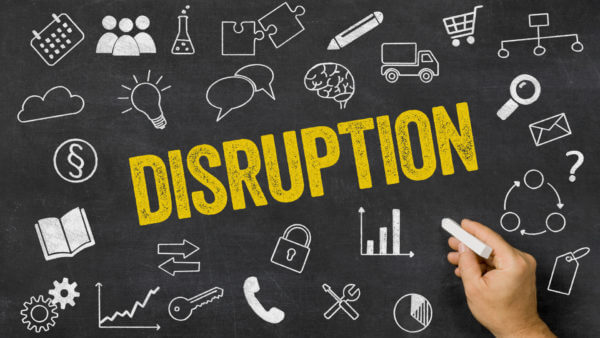Search Engine Land editors take a look back at the disruptions over the past few months, how marketers have adapted to the changes, and what the future may hold.
Since March, Live with Search Engine Land has provided marketers with an informal way to step outside their organizations and get a feel for the pulse of their industry as it navigates COVID, social justice movements, data regulation and algorithm updates.
Some of the insights shared by our dozens of panelists helped to explain trends or disseminate practical advice, both of which will be crucial to marketers as we move past these first six months of marketing disruption. While we all would like to maintain high hopes moving forward, the lessons we’ve learned during this period can help us prepare and build a foundation for success as the world continues to grapple with these extraordinary circumstances.
To recap the insights our panelists have shared, Search Engine Land’s Editor-in-chief, Ginny Marvin, hosted a special season wrap-up of Live with Search Engine Land, featuring fellow Search Engine Land editors Barry Schwartz, Greg Sterling and myself, George Nguyen.
COVID quick stats
Marvin set the tone of the session by laying down a timeline of events to illustrate the stranglehold effect that the coronavirus placed on economic activity.
- March 9: Google My Business told businesses to update their hours and other information.
- March 10: We published a story about how the coronavirus pandemic was disrupting search and digital ad budgets.
- March 11: US cases exceeded 1,000, the NBA announced it was suspending its season and a travel ban from the EU was announced.
- March 16: YouTube announced that more videos would be reviewed by machines due to staffing shortages. We also published a story about advertisers pausing campaigns: Travel advertisers cut media spend by 62% in the first two weeks of March compared to February. Media spend was also cut by higher education institutions, car dealerships, event venues, restaurants, etc.
- March 17: Amazon stopped accepting non-essential items; manufacturing supply chains were thrown into turmoil and inventory supplies are still being affected.
- End of May: Globally, 26% of SMBs were closed; 18% were still closed at the end of June. Source: Facebook.
On the opposite end, CPG and some other sectors saw growth as people turned to e-commerce: Target said they had 5 million new online shoppers; about 40% of those shoppers picked up products in-store. And, Shopify saw a 47% revenue increase YoY for Q1 2020.
Looking into the future, US e-commerce sales are expected to increase by 18% this year, according to eMarketer. That would put e-commerce at 14.5% of total retail sales; removing fuel and auto purchases puts that figure closer to 20%. However, this growth will not offset the loss of physical retail sales, which is expected to drop by 10.5%.
RELATED: E-commerce explodes: 45% growth in Q2
Takeaways from marketing experts during COVID
Prioritize your marketing momentum. Brands that can continue to run ads and other marketing campaigns should do so — that was the consensus during our digital commerce session of Live with Search Engine Land.
“What we found is that brands that go dark during recession, depression or even crisis-type periods have a very difficult time climbing back up the mountain once things begin to normalize,” Tony Verre, VP of e-commerce at Integer Group, said. Businesses that refine their marketing strategies when resources are tight, instead of stopping them altogether, are more likely to succeed during and after a recession, studies have shown.
Rethink your supply and fulfillment chain. Brands may opt to cut back on their marketing to save desperately needed resources, but they may also have no other choice: The pandemic’s disruption extended to supply chains, and businesses that may have been able to continue advertising may not have had inventory to sell, forcing them to halt their ads.
As an example, Marvin shared an anecdote about an Amazon seller she had spoken to: The seller stocked up on inventory in case her manufacturer were to abruptly shut down. Shortly thereafter, Amazon stopped taking non-essential items, “Suddenly, she had nowhere to ship it,” Marvin said.
Instead of resigning to her predicament and pausing her business, she was able to locate a warehouse that made auto parts, but do their own fulfillment through Amazon. She then made a deal with them to distribute her orders.
“You saw businesses being flexible in ways that, if you’d asked them two months ago if they could have pivoted their business model and fulfillment chain in two weeks [might have seemed impossible],” Marvin said.
Maintain your brand marketing efforts. Some organizations diverted more resources to their performance marketing campaigns, leaving their brand marketing efforts with the scraps.
“Suddenly during this time, we had everybody more or less saying the same things about the coronavirus,” said Sterling, pointing out the generic messaging that audiences quickly grew weary of. “It speaks to what differentiates marketers in a period like this . . . ultimately, I think brand is the differentiator in the end.”
Like a deer staring down a set of headlights, unexpected circumstances can paralyze unprepared brands. Build out processes that enable your organization to publish messaging that’s timely and aligned with what your audience expects to distinguish your brand from the competition.
What the SERP can look like. As COVID cases proliferated throughout the US, people turned to search engines for the latest news and data — some of it, potentially lifesaving.
In response, Bing created a COVID tracker, revamped its search results page and added a CDC self-checker chatbot to help users determine whether they should seek medical help.
Google overhauled its coronavirus-related search results pages, adding a navigation tab that enables searchers to filter their results for more specific information, sections for common questions, local and national resources, and at-a-glance statistics for the nation and the geographic region of the user.
While the search results pages for coronavirus-related queries were created under special circumstances and are atypical of the results we commonly see, it provides us a glimpse of the direction that search engines could be headed towards as they implement features that resolve more of users’ searches without them having to actually click through on a listing.
We at Search Engine Land hope this series of live discussions, presentations, tutorials and meetups will help everyone stay sharp and up to date on tactics and best practices. We’ll be taking a break for a few weeks and start season two of Live with Search Engine Land in mid-September. Season two will focus on innovative marketing and we have a lot of exciting new topics lined up.




